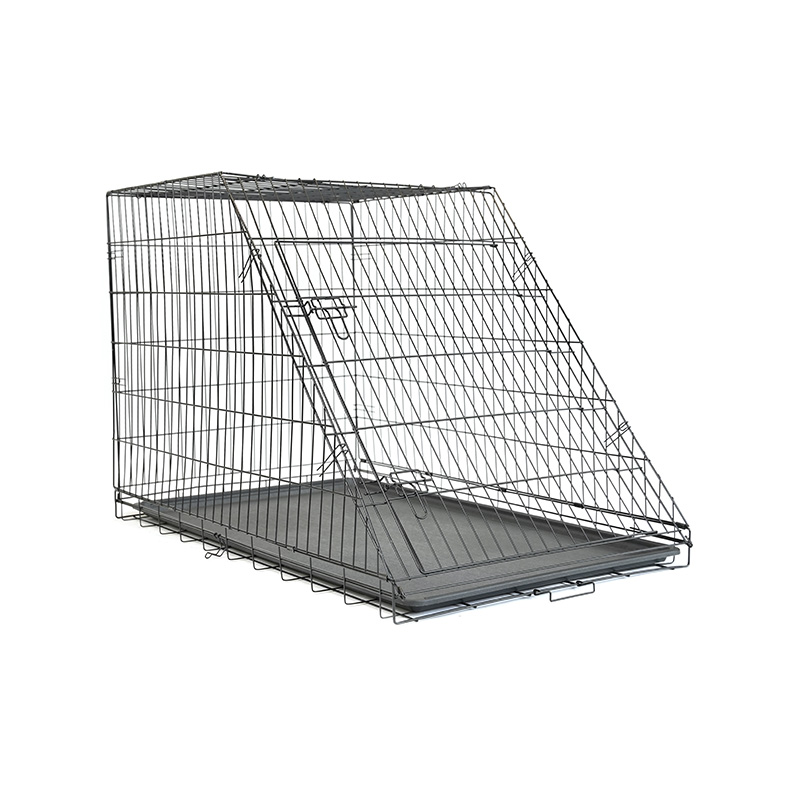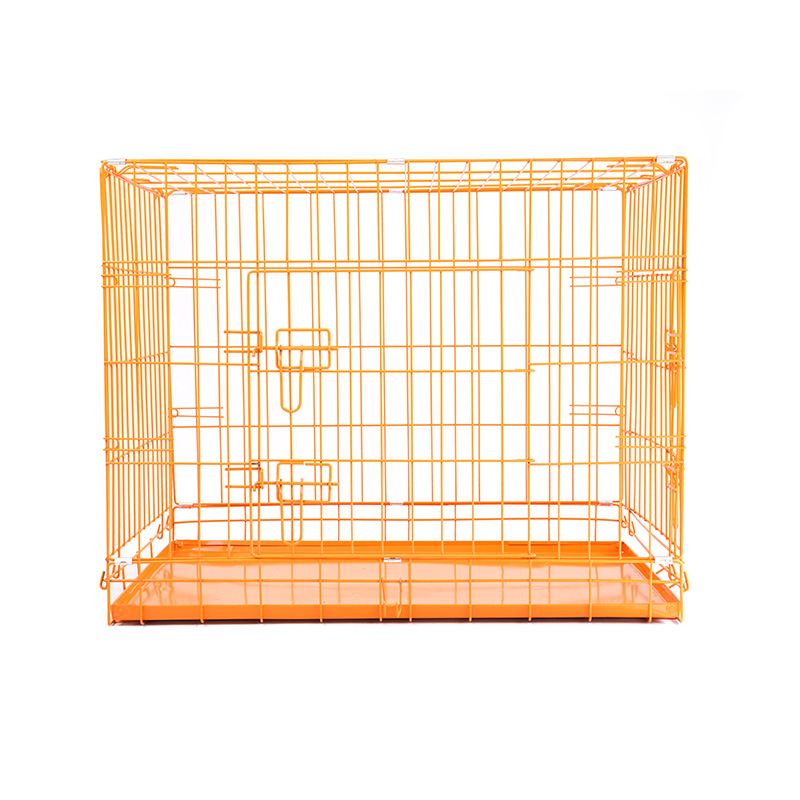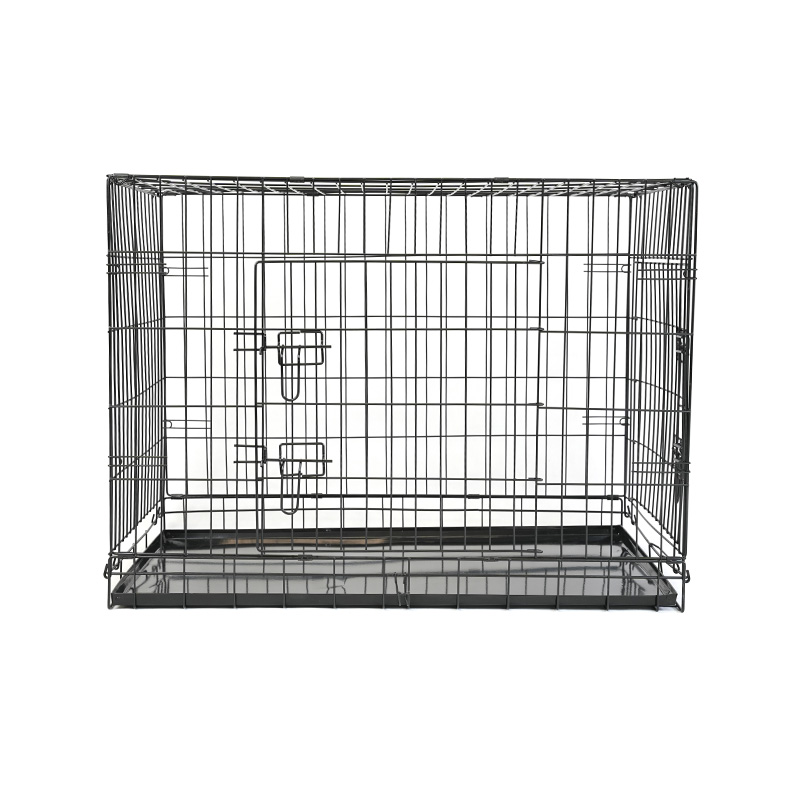- Type:
- Industry News
- Date
- 2024-May-09
Industry News
How safe are metal pet cages?
Metal pet carriers are a common device chosen by many pet owners to safely contain and manage their pets. These cages are usually made of metal materials, such as steel, aluminum alloy, etc., and are designed to provide a safe and comfortable environment to ensure that pets are not harmed within them and to prevent pets from escaping or causing damage to the surrounding environment.
Material durability and sturdiness:
Metal pet cages are usually made of steel, aluminum alloy and other metal materials, which have excellent durability. They are resistant to the wear and impact of daily use and are not easily damaged or deformed. Whether it's a large dog or a small pet, this durability ensures that the pet carrier maintains its structural integrity over time and doesn't become brittle or unstable due to your pet's activity. Metal pet cages are usually affected by indoor and outdoor environments, such as moisture, high temperature, dirt, etc. Therefore, the corrosion resistance of materials is crucial. High-quality metal materials are usually specially treated to have good corrosion resistance and can resist the effects of oxidation, rust and corrosion. This ensures that the pet carrier maintains its appearance and performance even in humid environments. The structure of a metal pet cage must be stable and reliable to ensure the safety of your pet inside. Pet cages made of high-quality metal materials usually feature reinforced connecting parts and structural design to ensure that they can withstand the pressure and impact that pets may exert. This structural stability makes the pet cage less likely to deform or tilt, maintaining a sense of security for pets inside.
Safety lock design:
Most metal pet cages come with a safety lock to ensure the cage door is securely closed and prevent your pet from opening it on their own. These locks are usually made of high-strength metal that is corrosion-resistant and tensile-resistant, preventing pets from banging or scratching to open the cage door. Some designs also include a double locking mechanism for extra security.
Proper Clearance and Ventilation:
Metal pet cages are usually designed with appropriately sized gaps and ventilation holes to ensure adequate air circulation and observation of the pet's surroundings. These gaps and vents are small enough to prevent pets from squeezing out or sticking their heads out and getting pinched. At the same time, they are large enough to effectively promote air circulation and avoid excessive temperature or poor ventilation in the cage.
No sharp corners and protruding parts:
Metal pet cages are typically manufactured to avoid sharp edges or protruding parts to reduce the risk of injury to your pet. All corners and connecting parts will be smoothed to prevent pets from being injured or scratched by collisions. This design takes into account the safety of pets and reduces risk factors that may cause trauma.
Easy to clean and maintain:
The surface of metal pet cages is usually smooth and easy to clean, which makes them easy to maintain and keep clean. Regular cleaning can prevent the growth of bacteria and dirt and ensure that pets are kept in a hygienic environment. At the same time, a clean metal surface also reduces health problems caused by pets licking dirt.
Proper size and comfort:
Metal pet carriers are usually provided in an appropriate size to ensure that the pet has enough room to move around and turn around. Pets should feel comfortable and safe in their cage, not restricted or depressed. In addition, some metal pet carriers may come with a comfortable base or pad for extra cushioning and support.
Metal pet cages offer a high level of security, ensuring the safety and comfort of your pets through their sturdy materials, secure locking mechanisms, proper ventilation design, and comfortable space. Pet owners can safely place their pets in metal pet cages without worrying about accidents.

Material durability and sturdiness:
Metal pet cages are usually made of steel, aluminum alloy and other metal materials, which have excellent durability. They are resistant to the wear and impact of daily use and are not easily damaged or deformed. Whether it's a large dog or a small pet, this durability ensures that the pet carrier maintains its structural integrity over time and doesn't become brittle or unstable due to your pet's activity. Metal pet cages are usually affected by indoor and outdoor environments, such as moisture, high temperature, dirt, etc. Therefore, the corrosion resistance of materials is crucial. High-quality metal materials are usually specially treated to have good corrosion resistance and can resist the effects of oxidation, rust and corrosion. This ensures that the pet carrier maintains its appearance and performance even in humid environments. The structure of a metal pet cage must be stable and reliable to ensure the safety of your pet inside. Pet cages made of high-quality metal materials usually feature reinforced connecting parts and structural design to ensure that they can withstand the pressure and impact that pets may exert. This structural stability makes the pet cage less likely to deform or tilt, maintaining a sense of security for pets inside.
Safety lock design:
Most metal pet cages come with a safety lock to ensure the cage door is securely closed and prevent your pet from opening it on their own. These locks are usually made of high-strength metal that is corrosion-resistant and tensile-resistant, preventing pets from banging or scratching to open the cage door. Some designs also include a double locking mechanism for extra security.
Proper Clearance and Ventilation:
Metal pet cages are usually designed with appropriately sized gaps and ventilation holes to ensure adequate air circulation and observation of the pet's surroundings. These gaps and vents are small enough to prevent pets from squeezing out or sticking their heads out and getting pinched. At the same time, they are large enough to effectively promote air circulation and avoid excessive temperature or poor ventilation in the cage.
No sharp corners and protruding parts:
Metal pet cages are typically manufactured to avoid sharp edges or protruding parts to reduce the risk of injury to your pet. All corners and connecting parts will be smoothed to prevent pets from being injured or scratched by collisions. This design takes into account the safety of pets and reduces risk factors that may cause trauma.
Easy to clean and maintain:
The surface of metal pet cages is usually smooth and easy to clean, which makes them easy to maintain and keep clean. Regular cleaning can prevent the growth of bacteria and dirt and ensure that pets are kept in a hygienic environment. At the same time, a clean metal surface also reduces health problems caused by pets licking dirt.
Proper size and comfort:
Metal pet carriers are usually provided in an appropriate size to ensure that the pet has enough room to move around and turn around. Pets should feel comfortable and safe in their cage, not restricted or depressed. In addition, some metal pet carriers may come with a comfortable base or pad for extra cushioning and support.
Metal pet cages offer a high level of security, ensuring the safety and comfort of your pets through their sturdy materials, secure locking mechanisms, proper ventilation design, and comfortable space. Pet owners can safely place their pets in metal pet cages without worrying about accidents.


 Inquiry
Inquiry

 English
English 中文简体
中文简体 Deutsch
Deutsch





